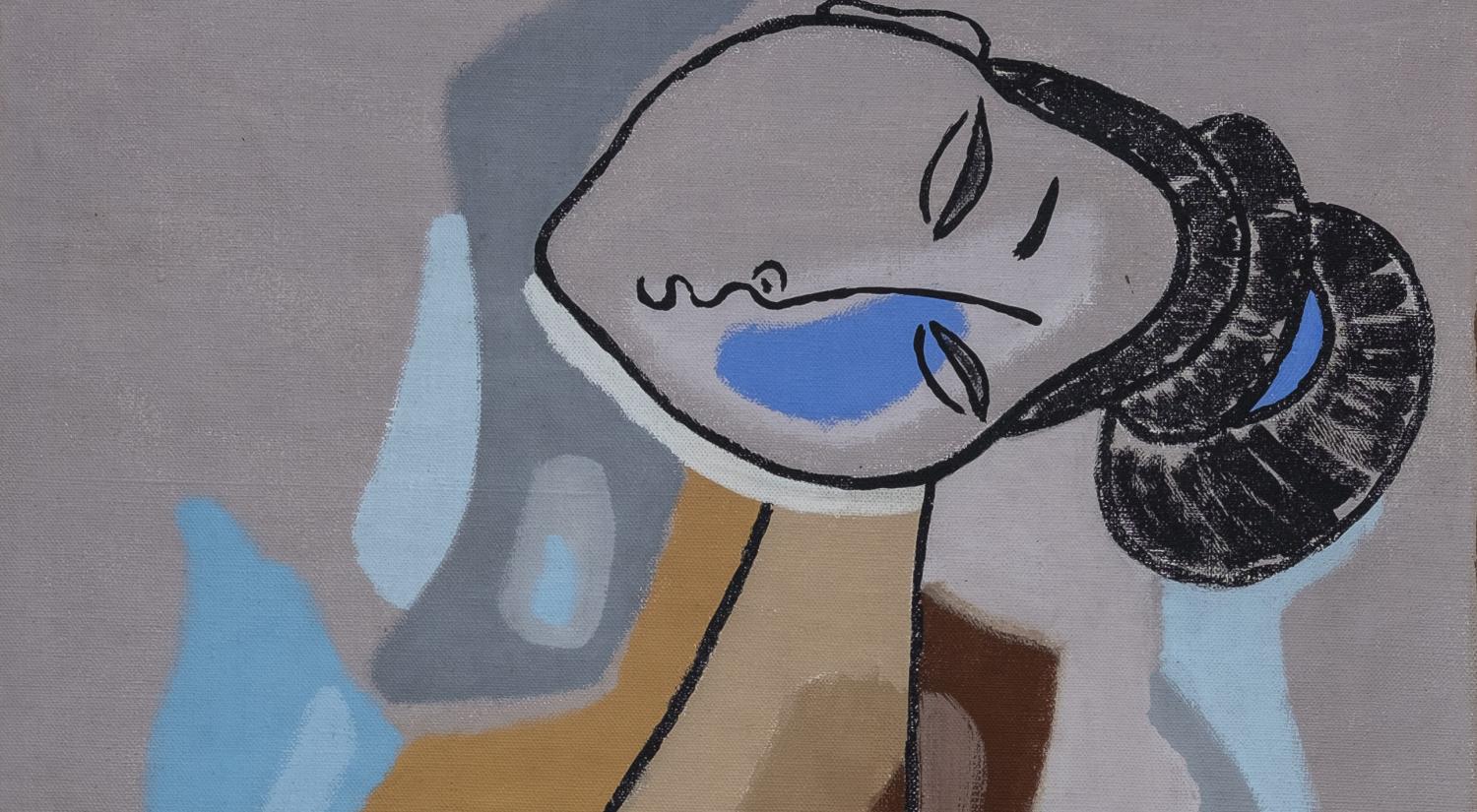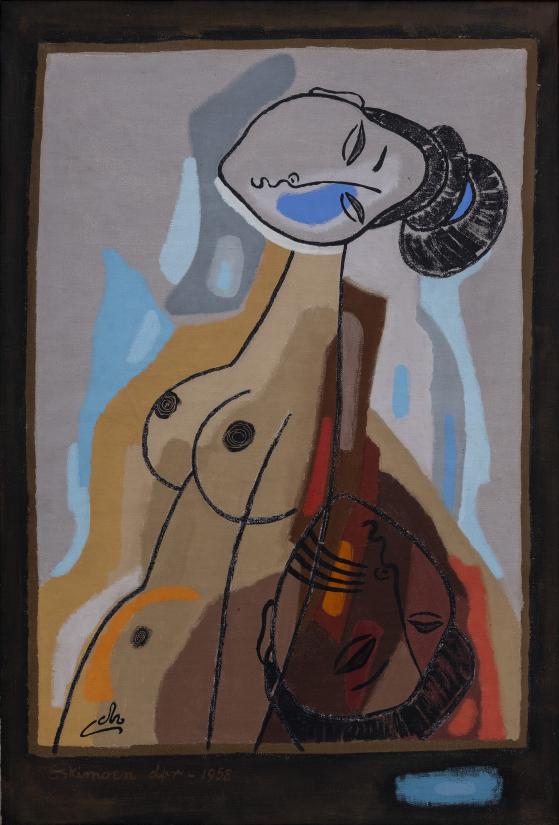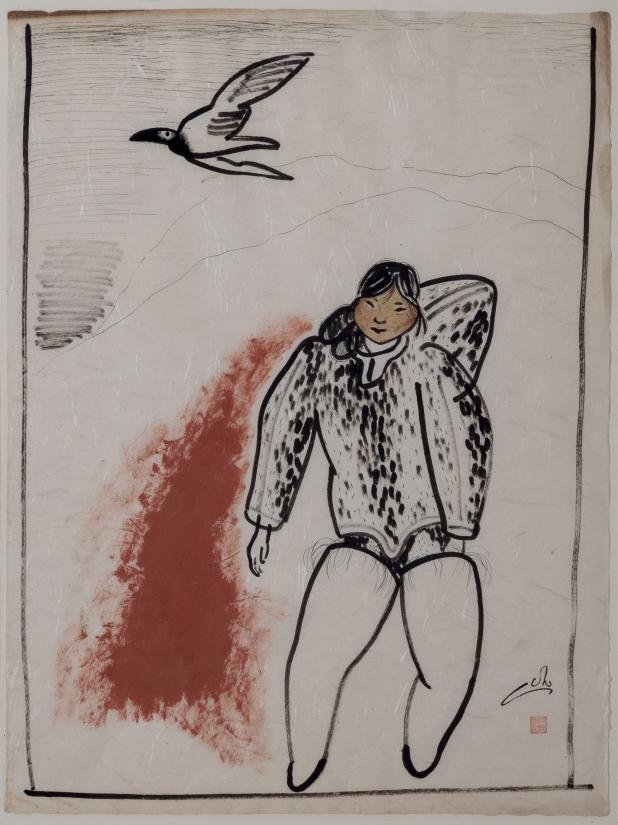Aage Gitz-Johansen followed in the wake of explorer-artists, such as Gauguin. When Gauguin set course for Tahiti and the Marquesas Islands, Gitz-Johansen went to Greenland. In Danish art history he stands out from the traditional treatment of Greenland as a subject matter. His main goal was not to depict what he had seen as accurately as possible but rather to reproduce a mood, a line and an interpretation of a place and a feeling.
Atypical artistic perspective on Greenland
Gitz-Johansen’s paintings are unusually sensitive, attentive and engaged. Both in style and in his treatment of his subject matter, Gitz-Johansen deviated from the naturalistic style that characterized earlier artists working with Greenlandic scenes and topics. Instead, his focus was on seeking out the essence of original Greenlandic folk culture. This is seen, for example, in Ingnerssuit, which depicts a mythological Greenlandic creature.
Modernity criticism and distinctive lines
With support from the New Carlsberg Foundation, Nuuk Art Museum has now acquired three drawings and a large oil painting by Gitz-Johansen. His painting Eskimoen dør (The Eskimo Dies) is exemplary of the artist’s unique approach to colour. It is also a comment on the processes of modernization that were initiated in Greenland during the 1950s, which Gitz-Johansen felt were destructive to Inuit culture. He regarded the Greenlanders as a naturvolk, a nature-people, whose indigeneity was being lost in modern society.
The drawing of Ravnekvinden (Raven Woman) comes to life in the space between the lines. In the depicted woman’s boots in particular, we see how the individual line fills out the empty space, but the drawing is also characterized by a strong composition. Gitz-Johansen’s calligraphic expression moves from thin lines to broad strokes with an immediate sense of lightness but also of deliberateness: when the contours of a person are to be reproduced by simple lines, each line has to be just right.
About Aage Gitz-Johansen
Gitz-Johansen (1897–1977), or Qalipaasorsuaq, as he was also called, was a Danish painter and graphic artist. From 1916 to 1921 he studied zoology at the University of Copenhagen and subsequently attended the Royal Danish Academy of Fine Arts, School of Graphic Art, in 1928–29. In 1932 he co-founded the artist group Koloristerne (the Colorists). He first travelled to Greenland in 1933 and made several repeat visits until 1948.







